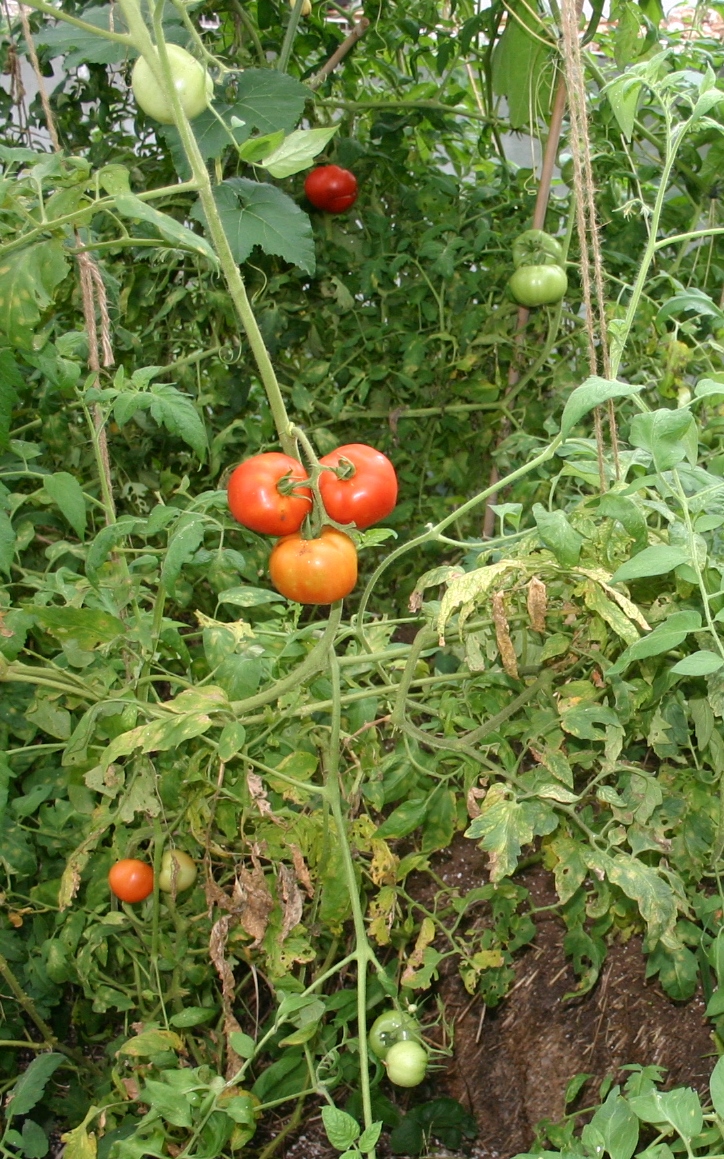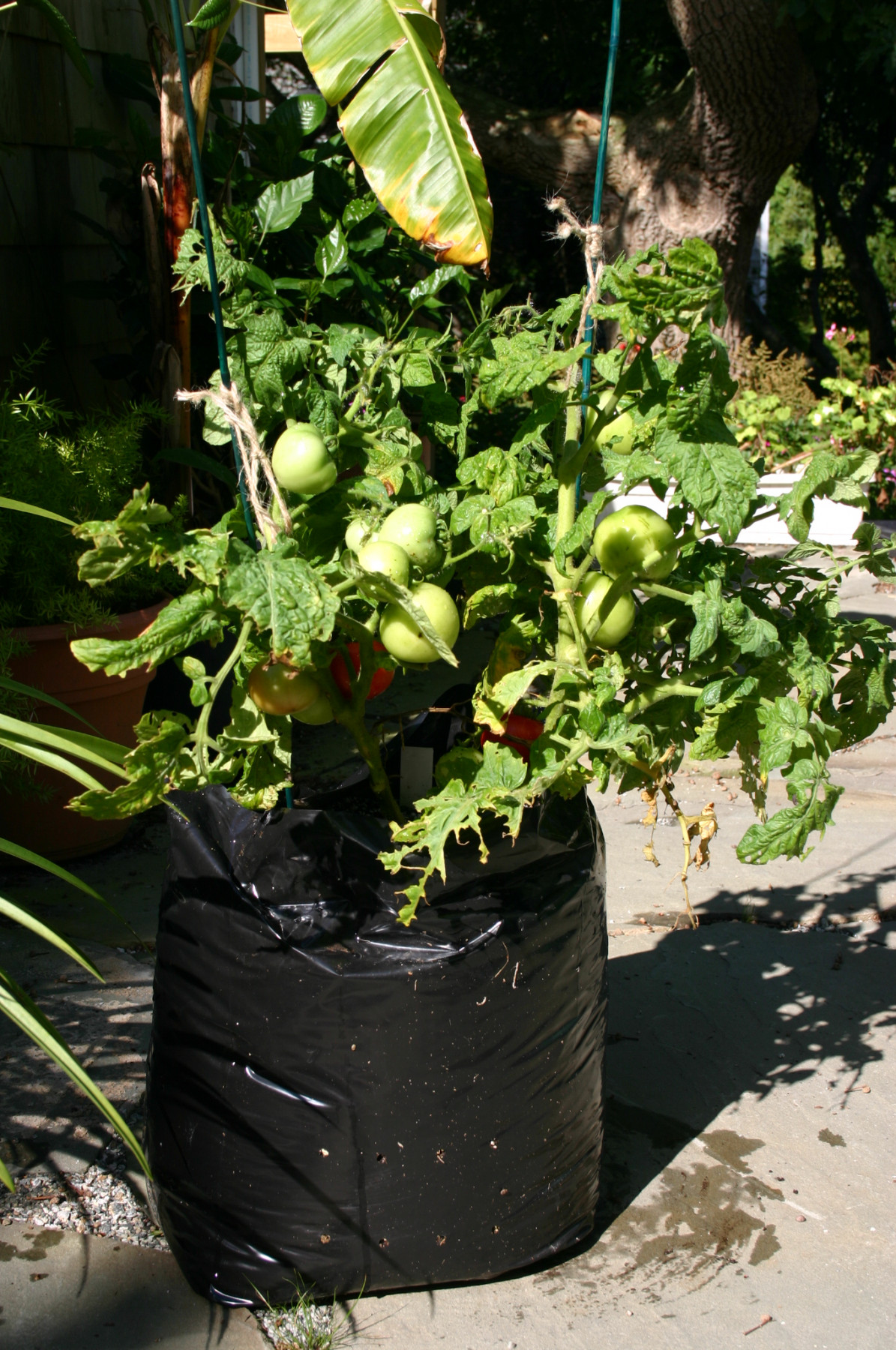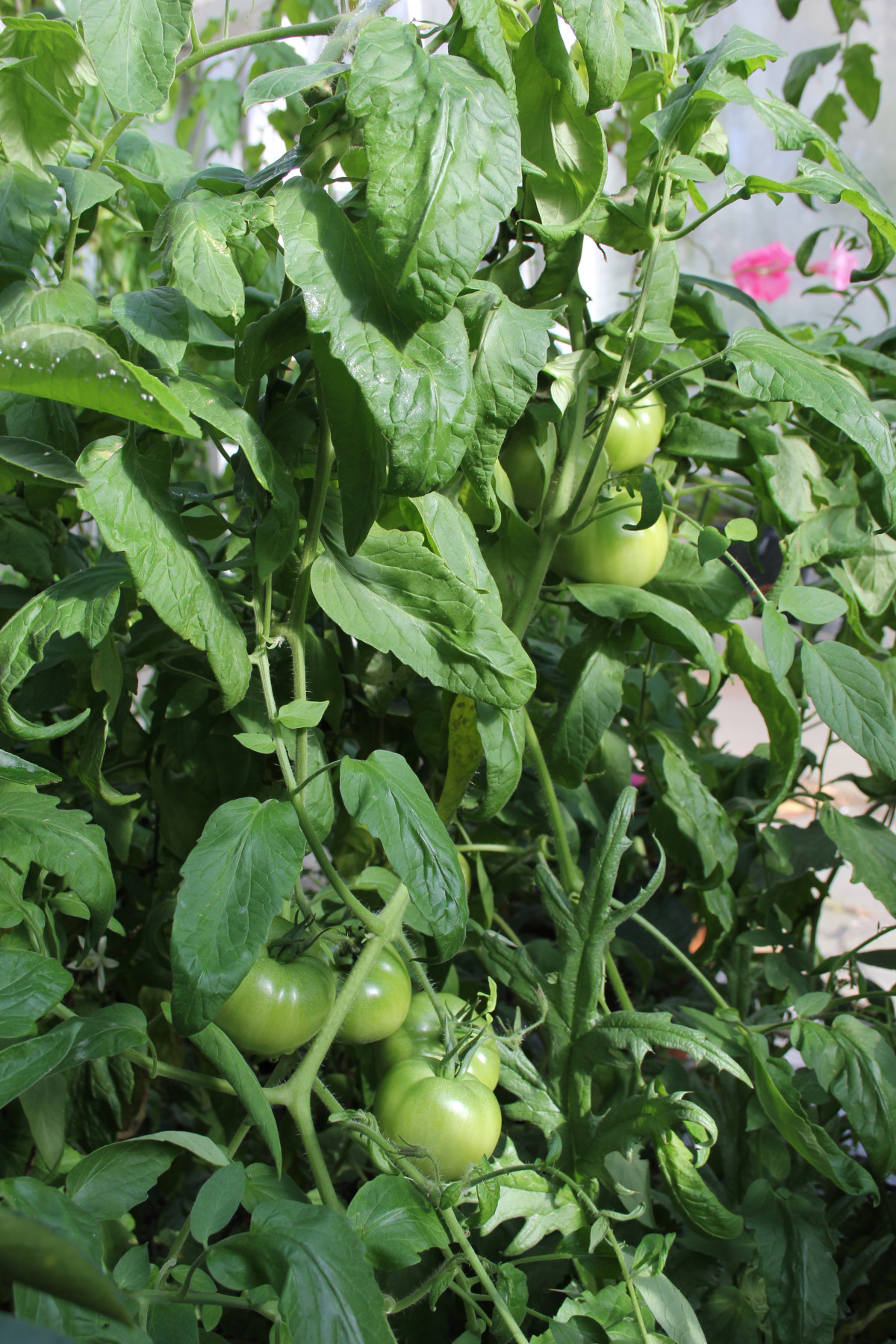
In a few weeks, many greenhouse owners will be buying and planting tomato seeds, and as always, they will be confronted with a bewildering array of varieties to choose from. They can buy hybrid or heirloom tomatoes, determinate or indeterminate ones, and these come in a vast array of sizes, colors, designated uses, and methods of being developed (GMO vs. non-GMO, for instance). The options can get overwhelming. But fortunately, you don’t need to be an expert on tomatoes to decide what seeds or plants best suit your needs. You just need to know some tomato basics, starting with the differences between hybrids and heirlooms and determinate and indeterminate kinds.
Hybrid or Heirloom?
What’s the difference between a hybrid tomato and an heirloom? A hybrid is a plant created by cross-breeding two genetically different varieties. The breeder takes the pollen from one variety and uses it to pollinate the other variety with the goal of getting seeds that will produce an entirely different third variety, one that has certain desired characteristics – perhaps a sought-after size, color, or flavor of fruit, for example. If you plant the seeds produced by hybrid plants, however, don’t expect them to produce the same hybrid variety. Often, some of the plants that grow will instead have the characteristics of one or the other of the hybrid’s parents. This means that, if you’re growing hybrid tomatoes, you’ll need to buy new commercially produced seeds every year.
Heirloom plants, in contrast, grow from seeds that retain the same genetic traits generation after generation. These plants are allowed to pollinate naturally among the particular heirloom variety, not in a controlled cross-pollination as occurs with hybrid plant production. Of course, some variations in the offspring will inevitably occur by natural mutation. But heirloom growers cull unusual variations from the seed stock so that the heirloom variety retains its traditional identity over time. Generally, a tomato variety won’t be considered a true heirloom unless it’s been around in its current form for at least 50 years. Many much-loved heirloom varieties have been around significantly longer than that. Amish Paste tomatoes, for instance, are said to have originated in the 1870s, some 150 years ago.

Determinate or Indeterminate?
The terms determinate and indeterminate refer not to how a tomato plant’s traits have been developed and retained over time but rather to the growth habit and fruiting characteristics of the plant. A determinate plant grows to a certain size and then stops growing, as many bush tomato varieties do, such as Bush Early Girl and Bush Beefsteak. Moreover, determinate plants are limited not just in their maximum size but also in their fruiting schedule. They produce their fruit over a limited time period, making it easy to harvest all the fruit at once. This trait makes them popular among people who grow tomatoes to make large quantities of tomato sauce or paste, for example. If this is your aim, you might try growing determinate plum tomatoes such as the longtime favorite Roma. But be aware that no more fruit will be set after all the tomatoes on a determinate plant have been picked. The plant is now done producing for the season.
In contrast, an indeterminate plant keeps growing bigger and producing more fruit as long as the growing conditions are suitable for it. Indeterminate varieties are perfect for gardeners who want to keep tomatoes coming as long as they possibly can for salads, sandwiches, side dishes, and so forth. In my greenhouse, I usually pick my first indeterminate tomatoes in June and the last ones right before Christmas. Large varieties of indeterminate tomatoes include such favorites as Burpees Big Boy, Beefmaster, and Brandywine. For smaller indeterminate tomatoes, try a cherry variety or a somewhat larger campari type.

Many growers prune off shoots and suckers on indeterminate tomato plants to help maximize their yields. This pruning is not required, however, because the nature of indeterminate plants is to keep setting fruit all summer long. But pruning, correctly done, can often result in larger fruit produced and bigger quantities of them. Determinate tomatoes, of course, are rarely pruned because the size to which the plant grows and its fruit-producing schedule are essentially genetically predetermined.
Disease Resistance
A knowledge of tomato-growing basics also includes an understanding of what the initials on a packet of seeds or in a seed catalog entry mean. These refer to the diseases and pests that hybrid varieties have been developed to be resistant to. For example, if you see the letters VFNT in a tomato description, it means that this variety is resistant to:
- V – Verticillium wilt. (Typically, wilt diseases are caused by fungi that get into the soil and stay there season after season. So if your soil contains wilt disease fungi, be sure to grow plants that are resistant to them.)
- F – Fusarium wilt. (Sometimes you’ll see a 1 and/or a 2 following the letter F. This means the variety is resistant to both strains of Fusarium wilt.)
- N – Nematodes. (These are tiny, parasitic worms that enter the plant through the roots.)
- T – Tobacco mosaic virus. (Tobacco mosaic virus is often transmitted by smokers who handle the plants.)
A few other initials may also be found in the descriptions of hybrid tomatoes, indicating their resistance to:
- ASC – Alternaria stem canker.
- ST – Stemphylium (grey leaf spot).
- SWV – Spotted Wilt Virus.
- LB – Late Blight (which often affects potatoes as well).
Starting Tomatoes from Seed

Growing tomatoes from seed isn’t difficult in a greenhouse. Plant the seeds in a warm area where they’ll get good light. I typically start tomato seeds in late January in my basement germination chamber, a fancy name for grow lights suspended over seed trays. Once planted, it take about a week for the seeds to germinate at a temperature of 65˚ to 75˚F, and two more weeks for the seedlings to produce their first true leaves. They can now be transplanted into individual pots. I use 4-inch pots to start with, making sure to set the seedlings fairly deep in the soil. The buried stem will soon produce more roots. Four to six weeks later, the plants are big enough to be repotted into gallon-size containers. By spring, the plants are about 12 to 24 inches tall and often have a few tomatoes on them. In fact, in my greenhouse in Rhode Island, I’ve had the first tomato develop as early as May 11th. If you desire, your greenhouse-grown tomato plants can be set outdoors in springtime as long as the outdoor soil temperature stays above 50 degrees F.


